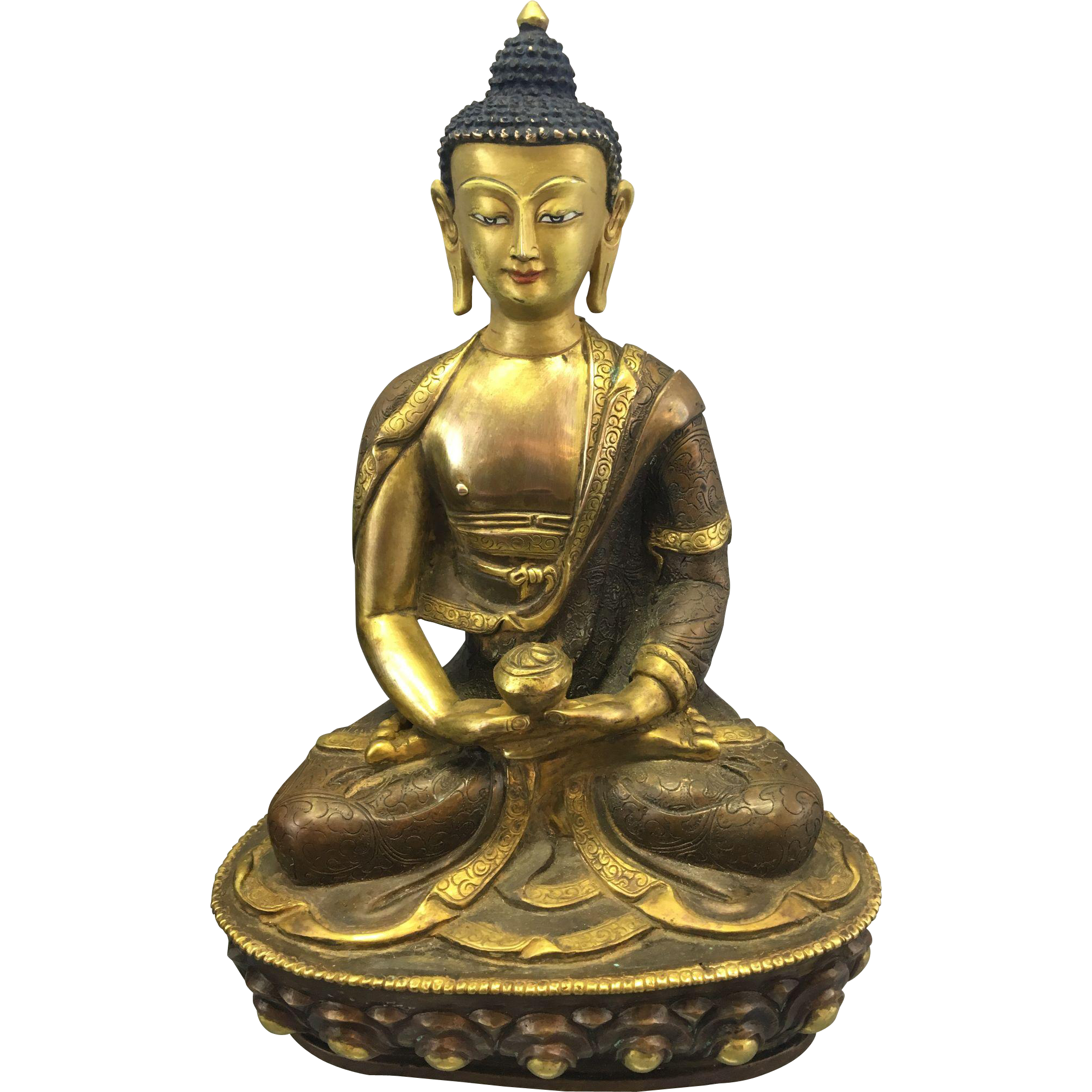Welcome to our sixty firtst online suggested practise for the week. We are now broadcasting a live teaching each Monday evening. If you would like to participate please contact us using the contact form on the homepage.
1.0) If you feel so inclined, begin by reciting the usual prayers (please follow below links for text). Alternatively, try to think or articulate a wish for all beings to achieve liberation from suffering, etc .
Four Thoughts: contemplating each in turn – http://northantsbuddhists.com/the-four-thoughts/
Refuge Prayer: twice in Tibetan, once in English – http://northantsbuddhists.com/the-refuge-prayer/

2.0) Who are Tsoknyi Rinpoche & the Nangchen Nuns – Presented by Dee Cormack
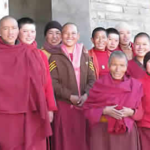
An extraordinary aspect of Tsoknyi Rinpoche’s life and work is the spiritual and material support he provides for a large number of nuns in Tibet and in Nepal. Hundreds of nuns study and practice in his hermitages in Nepal, and in the Nangchen region of East Tibet around 2,000 nuns and 900 monks are under his care.
He carries on a legacy started by Tsoknyi Rinpoche I in the mid-1800s, which was to create a vibrant system of practice centers and hermitages with extremely rigorous standards of practice that would allow thousands of women to strive for the fruit of Tibetan Buddhist practices: great love and compassion and profound freedom. This system was renowned in Tibet for the commitment and deep realization of its practitioners, with many great masters attesting to their excellence. The nuns live hard and simple lives, mirroring ancient Buddhist sages like Milarepa, and yet have a palpable, infectious inner joy and radiance.
There is no Buddha elsewhere; look at your own face.There is nothing else to search for; rest in your own place. Non-meditation is spontaneous perfection,so capture the royal seat. ~ Tsoknyi Rinpoche 1
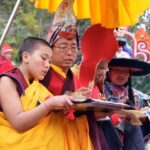
From at least the 12th century, Tibetan nunneries assumed a key role in preserving the dharma in Tibet. Prior to 1949, there were at least 818 nunneries and approximately 28,000 nuns. In the years that followed, nunneries were destroyed and some nuns imprisoned, forced into labor camps and tortured. The devastation to the tradition of the Tsoknyi Nuns, also known as the Nangchen Nuns was so extensive that the lineage was almost extinguished. In the mid-1980’s, a few surviving nuns began to rebuild and their numbers have grown to over 2,000 strong.
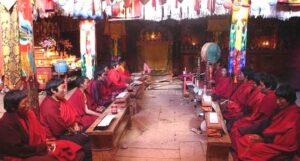
Today, obstacles to practice and survival persist, driving nuns from Tibet into more accommodating countries such as Nepal. The journey out of Tibet is arduous; many of the nuns, ranging in age from pre-teen to old age, arrive penniless, with only the clothes on their backs. Once the nuns have left Tibet, they receive no familial or community support and are left to fend for themselves in a foreign country.
Five Tsoknyi Nuns from Nangchen, Tibet made this same journey in 1994, and over time twenty-three Nangchen Nuns arrived in Kathmandu. While several of the nuns returned home to Nangchen over the years, leading members of the community remained and moved to Chobar to help Rinpoche create a home for the Tsoknyi Lineage outside of Tibet. Thanks to the generosity of Tsoknyi Rinpoche, their care was assured and they now form the core of Tsoknyi Gechak Ling, a monastic home in Nepal where they can practice, study and grow in the Dharma. They have been joined by more nuns from Nepal and currently, about 40 nuns and 82 girls live and practice at Tsoknyi Gechak Ling.
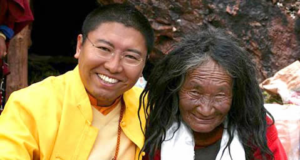
Mingyur Yogina
Until 1949, the region of Nangchen, where the great majority of the Tsoknyi nunneries are located, was an independent kingdom in Eastern Tibet, with its own language and its own government. It is now a county in the Qinghai province of China. Nangchen is so remote that before 1949, it was entirely outside of Chinese or Tibetan influence, and even today it is rarely visited. The entire region lies above 10,000 feet. Despite its high altitude, much of Nangchen is grassland, dissected by the steep gorges of rivers that converge to form the Mekong. The population has traditionally been comprised largely of nomadic or semi-nomadic herders, known for their excellent horsemanship and fierce fighting. In1994, the French explorer Dr. Michel Peissel described Nangchen as, “The remotest, largest, and most secretive of the many little kingdoms of the much-feared Khampa tribes,” and, “… no doubt the last of the truly unexplored old Tibetan kingdoms.”
The Tsoknyi nunneries were founded in the 19th century by Tsang Yang Gyamtso, who was commanded by his teacher, Tsoknyi Rinpoche I, to build nunneries in order to provide female practitioners with the same opportunities as men to learn and practice the most advanced teachings of Tibetan Buddhism.
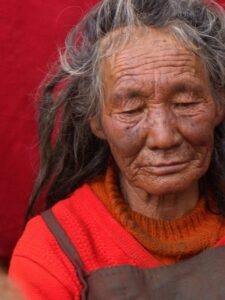
The late Mingyur Yogini, a senior Nangchen Nun
Nangchen is famous for its meditators – yogis and yoginis who practice with great persistence and determination and who attain great realization. The region is known as gomde, literally “land of great meditators.” Even in this environment, the Nangchen yogini nuns are famous for their accomplishments in profound yogas and meditation, particularly in ‘tsa lung‘ (practices such as tummo or inner heat), Dzogchen (the highest meditation), and chöd (cutting through all clinging to ego), which derive from the Kagyu and Nyingma schools of Tibetan Buddhism. The tradition of the Tsoknyi nuns thrived for a century, growing to 4000 women living in 40 nunneries scattered throughout the mountains of Nangchen.
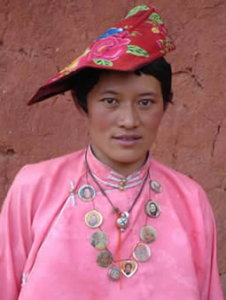
But all that changed when, during the Cultural Revolution of the 1960s, all 40 nunneries were destroyed and the nuns were dispersed. Many of the nuns were sent to Chinese work camps or escaped back to their nomadic families. Some were killed. But a handful of nuns hid in caves and endured great hardship, surviving in the high mountains in the Nangchen region where they continued to practice in secret. Through their immense love and care for the tradition, once conditions were ripe, they began to rebuild the practice centres and hermitages from scratch and teaching a new generation of nuns.
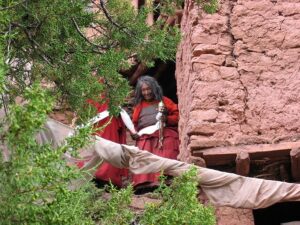
Most of the texts were lost, but the nuns managed to keep their tradition alive in their minds. After 20 years, these nuns began to regroup and rebuild their nunneries, stone by stone. Hearing that their lineage master was again active and teaching, a small group of theses nuns walked all the way from Nangchen to Nepal seeking out Tsokni Rinpoche.
The living presence of a master is considered a great blessing, as the master embodies the warmth and integrity of the teachings and imparts the transmission of the lineage.
Gradually others joined them. By the time that Tsoknyi Rinpoche III visited them in 2003 for the first time, he realized that through the efforts of the older nuns, this sacred tradition had been kept alive and was taking root in a new generation. Despite extreme physical hardships and primitive living conditions, today’s remaining elder nuns are passing on their spiritual heritage to a new generation.
Tsoknyi Rinpoche III took on the responsibility of helping them survive; today approximately 3000 nuns receive his support in approximately 35 nunneries. Most of the nuns are under 45 years old, a new generation that has joined the nunneries after they were rebuilt from the ruins of the Cultural Revolution.
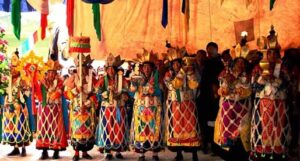
The majority of the nuns come from the local nomad population; and most of them have traditionally relied on their families for support. The nunneries’ yearly schedule includes breaks in the summer during which the nuns can go home to help their families with harvesting crops and herding yaks, returning to the nunneries with a share of the crop in the form of tsampa, the flour made from roasted barley that makes up the staple of their diet. Butter and tea (which they add to the tsampa) are the other staple foods. In recent times, forced urbanization or resettling of the nomadic families in permanent housing has begun to erode this traditional, family-based support system upon which the Nangchen nuns have relied.
The nuns’ story is one of dedication and tenacity. Typically, they perform many of their spiritual practices in a group, teaching and helping each other all their lives. Many nuns do three-year, nine-year, or even lifetime retreat. Today, as originally established by Tsoknyi Rinpoche I and Tsang Yang Gyamtso more than 100 years ago, most nunneries include a three-year retreat for all nuns, followed by entry into one of 16 practice houses – Ani houses ( dwellings where up to 15 nuns live together), teaching and helping each other all their lives.
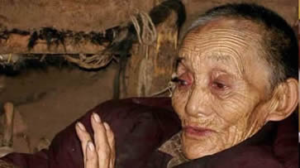

The late Sherab Zangmo, a senior Nangchen Nun
Remembering Sherab Zangmo, Great Yogini of Tibet by James Gritz
We crowded into the small dark room and sat shoulder to shoulder. The ceiling was covered with years of soot so thick that black stalactites had formed. My eyes teared from the fumes of incense and the yak dung smoke leaking from a crude wood stove. In the dark corner, light spilled from the doorway illuminating an ancient face, deeply etched from the harsh Tibetan life at 14,000 feet. There, leaning back in her meditation box was Sherab Zangmo spinning her prayer wheel.
When Sherab Zangmo was a young nun, during a dark retreat (a Dzogchen practice of staying in total darkness for 49 days and nights), she had a vision of Yeshe Sogyal, Padmasambhava’s principle consort.
“Three times she offered me mudras (hand gestures) and then she became Tsang Yang Gyamtso (the student of the first Tsoknyi Rinpoche who started Getchak Nunnery). He came to rest on top of my head and then he dissolved into my body, speech and mind. We became one. I cried and cried. That moment I had a direct experience of the nature of my mind. I have had many experiences, good and bad, but my mind has remained stable, neither good nor bad.”
Enthralled with the concept of seeing the world through enlightened eyes I asked Sherab Zangmo, “Can you describe your perception of the world?”
She replied, “What arises in my mind now is the thought to benefit others. On the other hand, I don’t cling to appearances as real, in the way that others do.” ( emptiness??)
Wangdrag Rinpoche, the head of Getchak nunnery, asked her, “Do they appear like a dream?”
“Yes, they appear illusory, like a dream,” she said.)))
The nuns’ daily routine captures a timeless scene from the past. A typical day starts around 3:30 a.m., as the nuns wake and immediately start their first three-hour practice session. After a short break for breakfast, they resume their second session, ending at lunch. The third session occupies the afternoon, and after a light evening meal, they complete their fourth practice session. They then continue sitting throughout the night, practicing dream yoga.
Alternating periods of maintaining daily upkeep with retreat, the Nangchen nuns remain in practice for the rest of their lives.
In retreat, the nuns’ daily routine is one that has been followed by yogis and yoginis for hundreds of years, including four three-hour meditation sessions per day. At night, most remain sitting in a meditation box, mingling meditation and sleep.
Many of the nuns are accomplished masters of difficult yogic practices such as tummo ( the yoga of inner heat). At Gebchak Gompa, they perform a yearly ritual to demonstrate their mastery of tummo, the yoga of inner fire. In mid-winter in temperatures far below freezing, approximately 100 nuns sit all night, wrapping wet sheets around their bare torsos, drying the sheets with the heat of the practice. Just before dawn, the nearly-naked practitioners perform a long procession around the nunnery, pausing to wet their sheets in barrels of icy water at the four corners and drying them as they walk. This very rare and awe-inspiring event, as well as the realization attained by these nuns, have gained them respect and renown throughout Tibet. In a culture where female practitioners have struggled to gain respect, the Tsoknyi Nangchen nuns have risen to a high level of status, with many monks and lamas seeking their teachings and instruction.
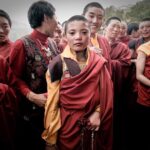
The power of the nuns’ practice is evident in the atmosphere of harmony and cooperation within the nunneries. Also, they have a profound impact on their surrounding communities. The communities and villages that surround the nunneries have become more peaceful and markedly happier, as violence and alcoholism have been reduced by the contact between the traditionally fierce Khampa nomads and the nuns. The nuns serve the community through spiritual support and counseling, helping with ceremonies at the time of death and so forth. This is a tangible example of the power of their spiritual influence.
The values that the Tsoknyi Nangchen nuns embody – peace, love, and compassion – affect the entire community and continue to branch out to the rest of the world. The nuns’ lives exemplify the power of living Dharma and its realization that transform the hearts and minds of all.
BLESSINGS, the documentary
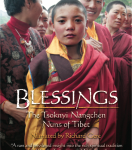
In the summer of 2005, Tsoknyi Rinpoche led a group of western students along with a photographer and video crew to Nangchen to document the lives and needs of the Nangchen Nuns. Blessings is a feature-length documentary DVD by Victress Hitchcock of Chariot Productions that offers a rare glimpse into the lives and faith of these extraordinary women. The Nangchen Nuns need health care, food, shelter and emergency relief.Blessings contains extraordinary footage that was collected on the journey to Nangchen. The DVD is available for purchase through www.chariotvideos.com.
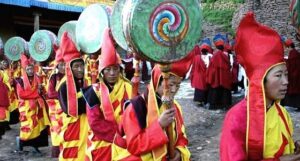
2.1) A guided meditation based on Tsoknyi Rinpoche – Presented by Bob Pollak

Guided meditation suggested by:
- Tsoknyi Rinpoche’s book Open Heart, Open Mind
- Dropping Practice: https://www.youtube.com/watch?v=TH3fFYqfOlA
–o0o–
